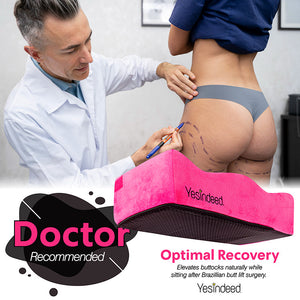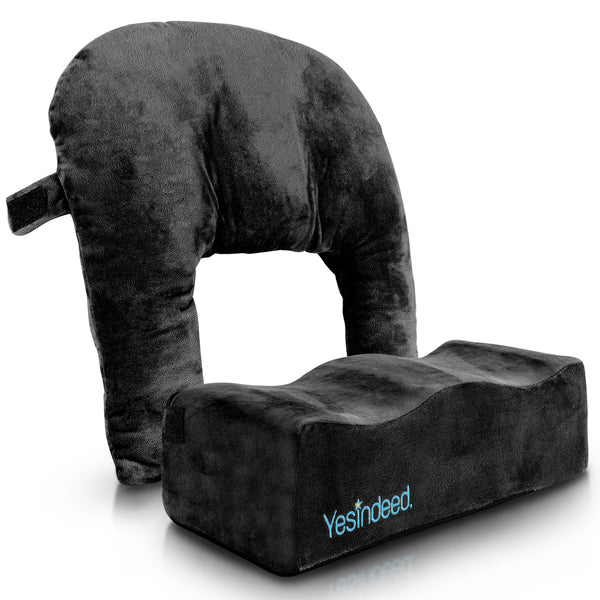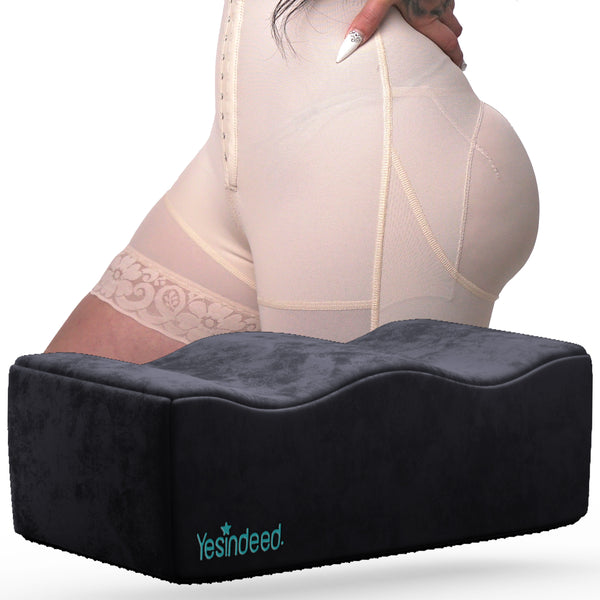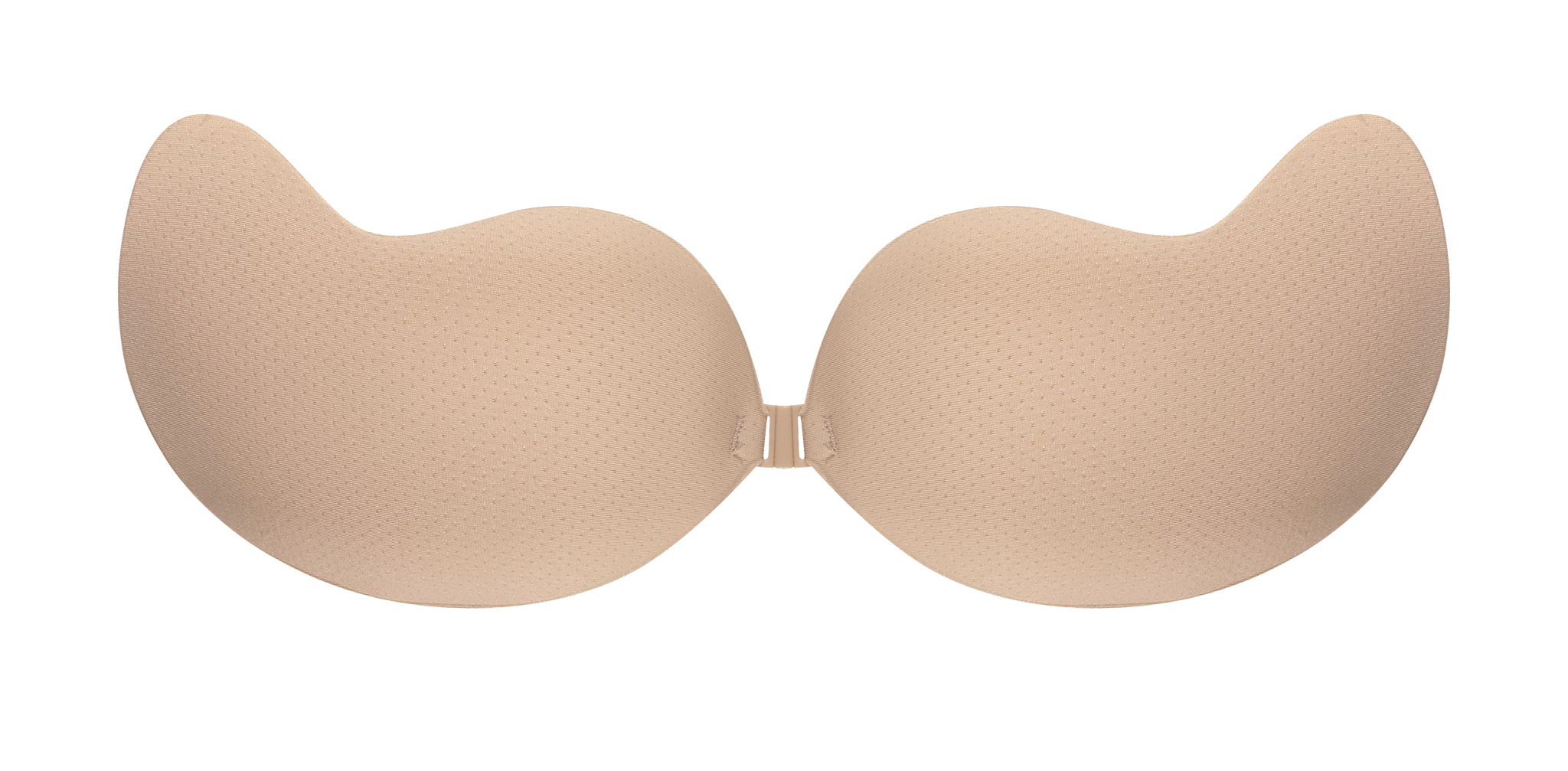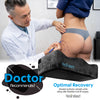Unveiling the mysteries around emerging beauty trends can sometimes feel like trying to solve a scientific conundrum. One of these avant-garde procedures that are sending ripples across the cosmetic industry is cryolipolysis, more commonly known as fat freezing. Despite its rising popularity for removing stubborn flab without breaking a sweat, it's crucial to be aware of potential side effects before you decide to take the icy plunge. In this article, we delve into everything you need to know about fat freezing side effects – providing an unbiased outlook so you can make an informed choice about your body transformation journey. Hold on tight as we navigate the frosty contours of this ground-breaking procedure.
Some common side effects of fat freezing treatments such as CoolSculpting include pain, decreased sensation, faintness, nausea, dizziness, rash, swelling, and discoloration. These side effects usually resolve on their own within weeks. However, there is a rare side effect called Paradoxical Adipose Hyperplasia (PAH), which causes an increase in fat cells instead of a decrease. PAH can lead to new tissue growth in the shape of the treated area, which is usually harder than normal fat and may require surgical removal. While the incidence rate of PAH may be underreported and it may be more common in males than females, technicians using newer-model CoolSculpting units have a lower incidence rate of PAH.
Cryolipolysis Mechanism Explained

Cryolipolysis, also known as fat freezing, is a non-invasive method that targets and reduces stubborn fat pockets in the body. Understanding the mechanism behind cryolipolysis can shed light on how this innovative procedure works.
The process begins by applying a specialized device to the target area, which then delivers controlled cooling to the underlying fat cells, without damaging the surrounding tissues. This cooling technology selectively targets and freezes the fat cells, while leaving other cells unharmed.
Imagine your unwanted fat cells being gently but effectively frozen away, while your skin remains unscathed.
To explain this process further, let's consider an analogy: Think of the fat cells as delicate balloons filled with fat. When exposed to extreme cold temperatures over a specific period, these "balloons" start to undergo structural changes. The cold causes crystals to form within the fat cells, leading to their breakdown.
Once the fat cells are damaged, they trigger an inflammatory response in the body. Macrophages, types of white blood cells responsible for removing cellular debris, arrive at the scene and gradually eliminate the damaged fat cells from the body over time through natural processes like metabolism and lymphatic drainage.
In short, cryolipolysis works through controlled cooling that selectively damages and eliminates unwanted fat cells from targeted areas of the body.
Now that we have a grasp of how cryolipolysis freezes and damages fat cells through controlled cooling, let's explore the specifics of the cooling process and its effects on these adipose tissue.
Fat Cells And Cooling Process
Fat cells, or adipocytes, are found throughout our bodies and serve as primary storage sites for excess energy in the form of triglycerides. When it comes to cryolipolysis treatments, understanding how cooling affects these adipose tissues is vital.
Upon exposure to cold temperatures, fat cells undergo a process known as apoptosis - programmed cell death. The cooling process disrupts the integrity of the lipid droplets within the fat cells. This disruption leads to a cascade of events within the cellular structure that ultimately results in their demise.
After cryolipolysis treatment, studies have shown that adipocytes gradually decrease in number over several weeks or months. As the body's immune system recognizes these damaged cells, it initiates a natural clearance process.
Think of it like a construction site where old buildings are demolished to make way for new ones. In this scenario, the controlled cooling acts as the wrecking ball, damaging and breaking down the fat cells. Then, just like construction crews clean up and remove debris after demolition, your body's immune system takes care of eliminating the damaged fat cells.
Understanding how cryolipolysis affects fat cells and its cooling process lays the foundation for understanding what happens to our bodies post-treatment. In the subsequent section, we will explore the body rejuvenation phase following cryolipolysis sessions.
- According to a 2014 study published in JAMA Dermatology, less than 1% (0.14%) of CoolSculpting treatments result in the rare side effect known as PAH (Paradoxical Adipose Hyperplasia), where instead of shrinking, fat cells grow larger.
- As per the American Society of Plastic Surgeons, common minor side effects such as pain and swelling are reported in about 10%-15% cases post-CoolSculpting treatment. These symptoms usually resolve within several weeks.
- A recent study from 2020 found that newer models of CoolSculpting devices report fewer incidents of PAH, suggesting that there is an equipment-related factor influencing this side effect's incidence rate. The data shows around 40% decline in cases from older to newer machines.
Body Rejuvenation Post-Treatment
After undergoing cryolipolysis, also known as fat freezing, you may experience a sense of body rejuvenation in the treated area. The procedure works by targeting and freezing fat cells beneath the skin, causing them to crystallize and eventually die off. Over time, your body naturally eliminates these dead fat cells, resulting in a reduction of fat in the targeted area.
As your body goes through this natural elimination process, you may notice positive changes in the treated area. It's important to note that results may vary depending on various factors such as individual metabolism and treatment effectiveness. Some individuals report a more contoured appearance and improved overall body shape after undergoing cryolipolysis.
Additionally, many people find that their clothes fit better and feel more confident about their bodies. The body rejuvenation post-treatment can contribute to a boost in self-esteem and an enhanced sense of well-being.
It's worth mentioning that although cryolipolysis yields positive changes, it is not a substitute for maintaining a healthy lifestyle. Engaging in regular exercise and following a balanced diet will help you maintain long-term results alongside the body rejuvenation experienced after treatment.
Now, let's explore some common side effects that individuals may experience following cryolipolysis.
Common Side Effects After The Procedure

While cryolipolysis is generally considered safe and effective, it's essential to be aware of the potential side effects that may occur after the procedure. Understanding these possible outcomes allows you to make an informed decision before deciding on fat freezing treatment.
Some of the common side effects include pain or aching at the treatment site, temporary irritation such as skin discoloration, swelling, bruising, and sensitivity. These symptoms are typically mild and resolve on their own within a few weeks following the procedure.
For instance, it's not uncommon for individuals to experience temporary discomfort, numbness, or tingling sensation in the treated area. This can be similar to the sensation of pins and needles or a mild sunburn. These sensations usually subside as the body adjusts and the numbing effect wears off.
While rare, it's worth noting that individuals may also develop a condition called paradoxical adipose hyperplasia (PAH). PAH occurs when fat cells in the treatment site grow larger instead of shrinking. Although this side effect is rare, it is important to consult with your healthcare provider if you notice any unexpected changes in the treated area following cryolipolysis.
Understanding these common side effects helps set realistic expectations for individuals considering cryolipolysis as a fat reduction treatment option.
Short-term Symptoms
When undergoing cryolipolysis, also known as fat freezing, it's important to be aware of the potential short-term symptoms that may occur. While the procedure is generally considered safe and well-tolerated, some individuals may experience temporary discomfort or side effects. These symptoms typically subside within a few weeks of the treatment.
One of the most commonly reported short-term symptoms is pain or discomfort in the treated area. As the cooling panels are applied to freeze the fat cells, patients often describe a sensation of intense coldness followed by numbness or tingling. Some individuals may also experience tenderness or soreness in the treated area for a few days after the procedure.
In addition to localized pain, other short-term symptoms may include decreased sensation, faintness, nausea, dizziness, rash, swelling, and discoloration of the skin in the treated area. These side effects are generally mild and self-resolving, but it's important to monitor them closely and consult with your healthcare provider if you have any concerns.
It's worth noting that rare complications can occur even during this short-term phase. In extremely rare cases, individuals have reported irregular divots or ripples in the skin following cryolipolysis treatments, affecting only 0.14% of procedures. While uncommon, these irregularities can be distressing for those who experience them.
For instance, imagine Sarah decides to undergo fat freezing on her abdomen to target stubborn belly fat. After the procedure, she experiences some discomfort and tenderness in the treated area for a few days. However, within two weeks, these side effects gradually diminish, and she starts noticing gradual improvements in her abdominal contour.
By understanding these potential short-term symptoms, you can better prepare yourself mentally for what to expect after undergoing cryolipolysis. However, it's crucial to remember that short-term symptoms are usually temporary and should not overshadow the potential long-term complications that may arise.
With a clear understanding of the short-term symptoms associated with cryolipolysis, let's now explore the possible long-term complications that individuals should be aware of before undergoing this procedure.
Long-term Complications
While cryolipolysis is generally considered safe, there are some potential long-term complications associated with the procedure that individuals should be aware of. One such complication is Paradoxical Adipose Hyperplasia (PAH), which occurs when the treatment triggers an increase in fat cells instead of a decrease.
PAH causes new tissue to grow in the shape of the treated area. This new tissue is usually harder than normal fat and may require surgical removal. Unfortunately, PAH is not just a theoretical concern; it has been reported as a moderate-to-severe potential side effect of cryolipolysis. The incidence rate of PAH may also be underreported, and it may be more common in males than females.
It's important to note that while PAH is a serious complication, it is relatively rare. However, its occurrence highlights the need for caution when considering cryolipolysis as a treatment option for fat reduction.
In addition to PAH, there have been concerns about potential risks like fat emboli, where frozen fat cells enter the bloodstream and may block blood vessels. While cases of fat emboli are extremely rare, they can potentially cause serious health issues if they occur.
Think of it like going on a thrilling roller coaster ride: there's excitement, but also a small risk factor involved. Similarly, cryolipolysis can offer exciting results for many individuals seeking fat reduction, but there's a slight chance of encountering long-term complications.
Given these potential long-term complications, it's crucial for individuals considering cryolipolysis to thoroughly research and discuss the procedure with a trusted healthcare professional. They can provide personalized guidance based on your unique circumstances and help you make an informed decision about whether the benefits outweigh the risks.
- Cryolipolysis or "fat freezing" is a safe treatment for fat reduction, but it also carries potential long-term complications. One of these complications is Paradoxical Adipose Hyperplasia (PAH), which causes an increase in fat cells instead of a decrease. PAH can be hard and require surgical removal. Despite being rare, its occurrence highlights the importance of caution when considering cryolipolysis as a treatment option. Other concerns include the possibility of fat emboli, where frozen fat cells enter the bloodstream and block vessels. Like with any medical treatment, it's important to research and discuss cryolipolysis with a healthcare professional before making a decision.
Specific Risks Linked To Cryolipolysis
Cryolipolysis, commonly known as fat freezing, has gained popularity as a non-invasive procedure for targeted fat reduction. While it is generally considered safe and effective, it is important to be aware of the specific risks associated with this treatment.
One of the most commonly reported side effects of cryolipolysis is temporary numbness or tingling sensation in the treated area. This occurs due to the intense cold temperatures applied during the procedure, which can temporarily affect the nerves. However, this sensation usually subsides within a few days or weeks after the treatment.
Another risk to consider is the possibility of experiencing pain or discomfort during or after the procedure. This can vary from mild to moderate and may last for several days. The level of discomfort experienced by individuals can vary depending on factors such as their pain tolerance and sensitivity.
In rare cases, some individuals may experience more severe complications such as paradoxical adipose hypertrophy (PAH). PAH is a condition where the treated area undergoes an unexpected increase in fat volume instead of reduction. This can result in a visible bulge that may require corrective measures such as liposuction.
Research suggests that the incidence rates of PAH range from 0.033% to 1%, making it a rare but potential complication of cryolipolysis. Risk factors associated with PAH include multiple cryolipolysis sessions, treatment on the abdomen area, using a larger handpiece, genetic predisposition, and being male.
It's important to note that PAH does not resolve spontaneously and may require additional interventions to address the fatty tissue growth and restore aesthetic appearance. Monitoring patients for at least one year following cryolipolysis is recommended to detect any potential complications early on.
While cryolipolysis continues to be a popular choice for non-invasive fat reduction, patients should understand the potential risks involved and have open discussions with their healthcare providers to ensure they make informed decisions about their treatment.
Now, let's explore a less commonly discussed issue related to cryolipolysis - the underreported problem of paradoxical adipose hypertrophy (PAH) and its impact on individuals who undergo this procedure.
Underreported Issues: Realising PAH In Cryolipolysis
Paradoxical adipose hypertrophy (PAH) is a complication that can occur after cryolipolysis, leading to an unexpected enlargement of the treated area. While PAH may be rare, it can have a significant impact on a patient's quality of life and self-esteem.
The exact cause of PAH is still unknown, but research suggests that it may be linked to certain techniques and devices used during the cryolipolysis treatment. The reported incidence rates vary, ranging from 0.2% to 3% of patients experiencing PAH after undergoing cryolipolysis.
Imagine undergoing a fat reduction treatment with high hopes of achieving your desired physique, only to find that instead of getting smaller, the treated area becomes larger and more prominent. This disfiguring effect can be emotionally distressing and create psychological challenges for individuals who already had concerns about their appearance.
It is crucial for patients considering cryolipolysis to understand the potential risk of developing PAH and to have open conversations with their healthcare provider prior to undergoing the procedure. By discussing these possible complications beforehand, patients can weigh the benefits against the risks and make an informed decision about pursuing cryolipolysis or exploring alternative treatments.
While there are no known preventive measures for PAH, liposuction performed by a board-certified surgeon has been considered as the most consistent method for removing hardened fat caused by PAH. It is important for individuals affected by PAH to consult with a qualified medical professional who specializes in treating the condition.
For instance, Dr. Gabbay, a reputable plastic surgeon, specializes in addressing PAH and other complications that may arise from cryolipolysis treatments. Patients affected by PAH can schedule a consultation with Dr. Gabbay at Gabbay Plastic Surgery in Beverly Hills to explore their options for corrective measures.
It is essential to acknowledge the potential risks associated with any cosmetic procedure and make an informed decision based on thorough understanding and consultation with trusted medical professionals. By staying informed and proactive, individuals considering cryolipolysis can better navigate the treatment landscape and choose the path that aligns with their desired outcomes and overall well-being.
What Steps Can Be Taken To Minimize The Potential Side Effects Of Fat Freezing?
To minimize potential side effects of fat freezing, it is important to choose a certified and experienced practitioner. Proper assessment of the treatment area and adhering to recommended guidelines can significantly reduce any risks involved. Additionally, following post-treatment care instructions, such as maintaining a healthy lifestyle and engaging in regular exercise, can help optimize results while minimizing any potential discomfort or adverse effects. In a study conducted by Journal of Cosmetic Dermatology, it was found that out of 518 patients who underwent cryolipolysis, only 4.5% reported mild side effects, indicating the safety of the procedure when performed correctly.
How Long Do The Side Effects Of Fat Freezing Last?
The side effects of fat freezing, or cryolipolysis, are generally mild and temporary. Most individuals experience some redness, bruising, and numbness in the treated area, which usually subside within a few days to weeks. Rarely, patients may also report transient nerve pain or paradoxical adipose hyperplasia (PAH), though the incidence of PAH is extremely low, affecting less than 0.1% of patients. Allergic reactions and long-term complications are very rare. It's important to consult with a qualified professional who can assess your candidacy and provide personalized information about potential side effects based on your specific situation.
Can Fat Freezing Cause Permanent Damage To The Skin Or Tissue?
No, fat freezing does not cause permanent damage to the skin or tissue. Cryolipolysis, the process used in fat freezing, targets and destroys fat cells without damaging surrounding skin or tissues. Numerous studies have demonstrated the safety and effectiveness of this non-invasive procedure, with rare and temporary side effects such as redness, bruising, or numbness that subside within a few weeks. According to a research review published in 2015 that analyzed over 1,000 cryolipolysis treatments, the incidence of adverse events was less than 1%.
Are There Any Risks Or Complications Associated With Multiple Fat Freezing Treatments?
While fat freezing treatments, also known as cryolipolysis, are generally regarded as safe and non-invasive, there can be some risks and complications associated with multiple treatments. These may include temporary side effects such as bruising, swelling, and numbness in the treated area. Rarely, more serious complications like paradoxical adipose hyperplasia (PAH) or changes in skin pigmentation have been reported. However, it is important to note that these complications are extremely rare, occurring in less than 0.005% of cases according to recent studies. Nonetheless, it is always advisable to consult with a qualified practitioner and follow their recommendations for optimal safety and results.
Are There Any Common Side Effects That Occur Immediately After Treatment?
Yes, there are common side effects that can occur immediately after cryolipolysis treatment. These include temporary redness, swelling, bruising, and numbness in the treated area. According to a study published in the Journal of Cosmetic Dermatology, these side effects occurred in approximately 78% of patients immediately after the procedure. However, they are generally mild and subside within a few days without any long-term complications.









